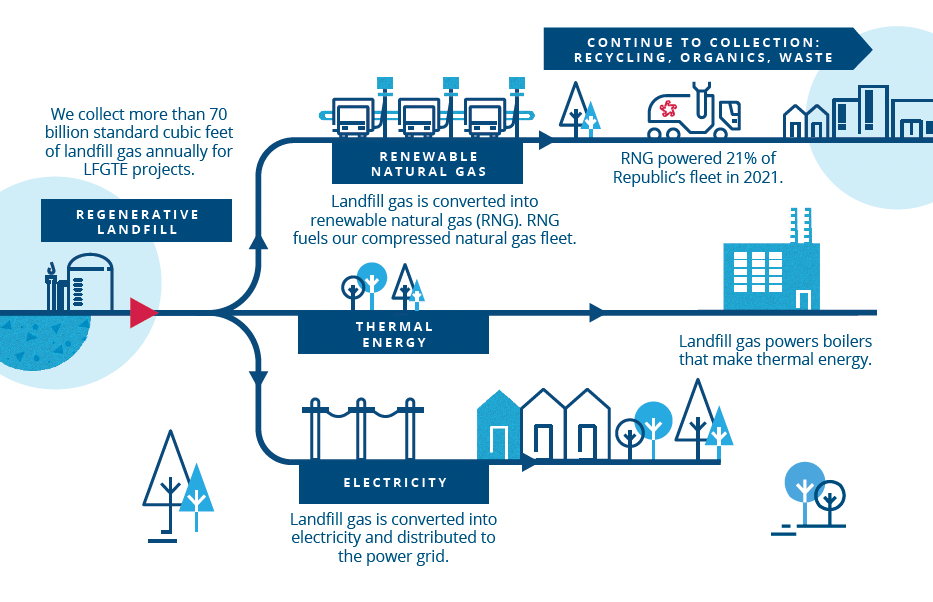
From Landfill Gas to Renewable Energy: The Modern Approach
Converting gas to energy is crucial to an overall waste solution. Learn why in this in-depth look at landfill gas as a sustainable energy resource.Byline: BTB Editor
November 11, 2024 / Time to read: 5 minEvery day, the average American throws away almost
While many of us strive to reduce, reuse, recycle and compost —sometimes the trash bin is the only option. But, you can rest assured that not all your waste goes to waste, thanks to modern landfills and a process called landfill gas to energy (LFGTE).
Modern landfills that convert gas to energy are a crucial part of the overall solution for dealing with waste. When paired with waste diversion from landfills through recycling — as well as composting yard and food waste — converting landfill gas to energy is a cost-effective and environmentally sustainable solution. Keep reading to learn more about LFGTE.
The Components of a Modern Landfill
Contrary to popular imagination, a landfill is not just a big hole in the ground where trucks dump trash every day.
- Protective Layers: A liner with several layers covers the ground to prevent contaminants from seeping into the soil.
- Leachate Management: Pipes systematically collect leachate, or wastewater, and direct it to treatment plants to be treated and reused.
- Biogas Extraction: Decomposing waste emits biogas. Within these sites, strategically placed wells capture this gas, turning waste into potential energy.
- Waste Coverage: To minimize odors and windblown debris, waste is compacted and covered daily. Upon reaching capacity, landfills are sealed permanently with a final covering, safeguarding it as well as its surrounding environment.
Landfill Gas to Energy: The Process
The landfill gas-to-energy process occurs after the wells extract biogas from the landfill.
Landfill biogas is a natural byproduct of decaying organic waste in landfills and consists of about
Renewable Energy Demand Is Surging
Today, demand for renewable energy is driven by global efforts to decarbonize and reduce emissions, so our focus has shifted accordingly. Republic Services collects more than
- Renewable Natural Gas (RNG): This gas powers 20% of our fleet, with approximately 3,300 trucks relying on natural gas.
- Thermal Energy: The biogas fuels boilers that generate thermal energy.
- Electricity: Biogas is also converted into electricity, contributing to the power grid.
To learn more about our approach to LFGTE, check out our

